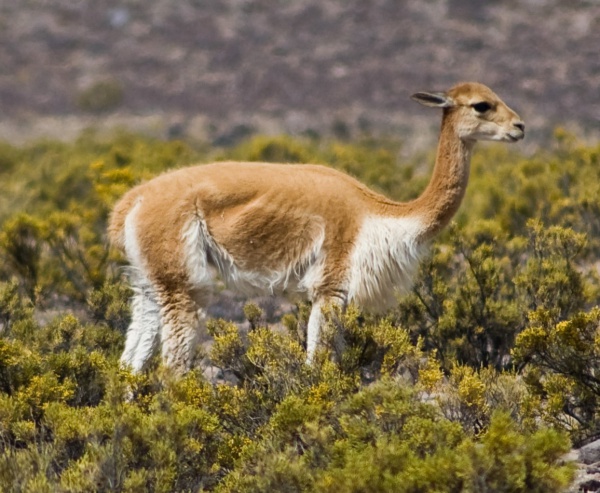Facts About Vicugna
The vicuña is a wild camelid native to the high alpine regions of the Andes in South America and is closely related to llamas. These graceful animals are believed to be the ancestors of domesticated alpacas and are highly prized for their incredibly fine wool. Vicuña wool is exceptionally soft and warm, but because these animals can only be shorn every three years, producing the wool is a labor-intensive process.
During the Inca Empire, only royalty were permitted to wear garments made from vicuña wool. Today, vicuñas are protected by law and their population has made a remarkable recovery, now numbering around 350,000. Despite this success, conservation efforts continue to protect them from threats such as poaching and habitat loss.
Vicuñas are smaller and more delicate than guanacos, another type of South American camelid. They have a tawny brown coat with white fur on their throat and chest. These animals live in family groups and maintain specific territories for feeding. Their natural predators include pumas and foxes. Mating occurs in March and April, with females giving birth to a single fawn after an 11-month gestation period.
Vicuñas are found in the central Andes of countries like Peru, Argentina, Bolivia, and Chile, thriving at altitudes between 3,200 and 4,800 meters. They graze on grassy plains during the day and seek shelter on slopes at night. Due to concerted conservation efforts, vicuña populations have significantly recovered, supported by organized shearing events to collect wool and protect the species.
Vicuña wool is highly coveted for its remarkable warmth and softness, with fibers as fine as 12 micrometers in diameter. Historically, wool gathering was conducted through communal efforts called "chaccu" where the animals were sheared and then released. Today, a labeling system ensures that the wool is produced ethically, though illegal activities still pose a threat to the species. Vicuña wool is used in luxury apparel and home furnishings, with fabric prices ranging from $1,800 to $3,000 per yard.
The ongoing conservation efforts, which include habitat protection and sustainable wool harvesting, are vital for the long-term survival of the vicuña.

 Brazil
Brazil